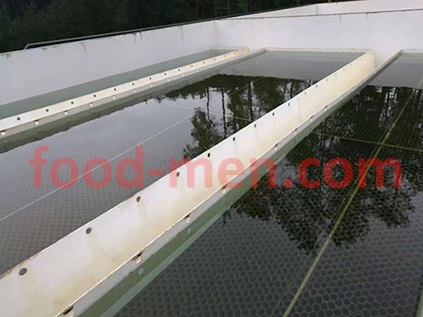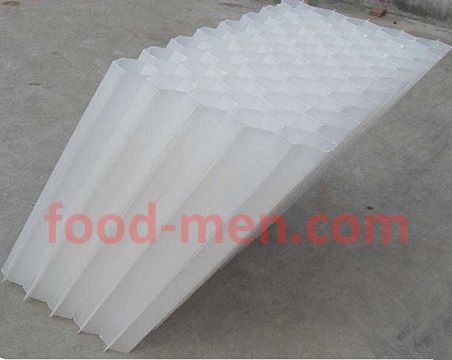Drinking Water Purification Treatment Solution Without RO Equipment
Published date and time: 2021-04-03, 20:26
Date and time of modification: 2021-04-03, 20:26
Author: Food-Men
This purification treatment technical solution uses flocculation, sedimentation and filtration to remove impurities in the natural water to meet drinking standards, and there is no RO equipment, the water purification treatment capacity is large, and the degree of automation is high, is a mature solution.
1. Characteristics of common natural water
The common natural waters include river water, lake water, well water and mountain water.
The water in rivers and lakes is surface water. Generally, the water is turbid, the microbial content is large, and it is easily polluted by the environment. Therefore, the drinking water treatment equipment enhances coagulation, filtration, and sterilization measures. Of course, for water with more serious environmental pollution, Water purification equipment should be added.
The well water and mountain water are groundwater. They are generally clear and transparent, and have low microbial content. Most of them are raw water that is not suitable for human drinking. The salinity and total hardness of water are high. In some areas, groundwater has higher levels of iron and manganese, while some have more calcium carbonate. Groundwater usually has a low water season and a high water period. During these two periods, the quality of water will change. In addition, as the industrial process continues to accelerate, the pollution of the environment is becoming more serious, and groundwater is inevitably polluted. Therefore, we must regularly check the quality of water and take reasonable water treatment measures. The well and mountain water treatment equipment for drinking is relatively important water purification equipment in the food industry.
2. Introduction to drinking water purification treatment solutions without RO equipment
2.1 Working principle of drinking water purification treatment solution without RO equipment

As shown above:
•Groundwater is transported from the raw water pump (a) to the pipe mixer (c);
•The precipitant is placed in the precipitation preparation tank (b) , stirred with water, dissolved, and sent by a small pump through a small yellow tube to a pipe mixer (c) mixed with river water;
•The mixed water enters the corrugated plate area (d) , and the water turbulently pulsates between the corrugated plates and moves upwards, so that the soil impurities in the water are thoroughly mixed with the precipitating agent, and are adsorbed by the precipitating agent into flocculent mud clusters, when the water level reaches the height of the baffle plate A part of the water flows into the mud collecting area (e) until the water level rises to be flush with the water level of the corrugated board area (d), and the water levels of (e) and (d) rise together into the left branch area (under the light blue area and the deflector) The area between the tops ) , the water slowly rises slightly to the left in the thin inclined tube, and calms down, no longer turbulent;
•The mixed water continues to rise slightly to the left to the light blue area. There is nothing in this area. The mixed water has a tendency to move to the left, but when it continues to rise into the right inclined tube area ( dark blue area f) , due to a sudden change in direction ( from The left rises to the right rise ), and the heavier flocculent mud in the water is turned to the left to enter the mud collection area (e). Due to its heavier weight, it slowly sinks below the mud collection area (e);
•The lighter flocculent muds ascend into the right inclined pipe zone (f), where they adsorb into each other into a large flocculent mass, and settle down to the mud collecting zone (e);
•When the mud collection area (e) has more mud, start the mud pump to drain the mud (the mud pump is on the left side of the mud collection area (e).
•After precipitation, the semi-clear water continues to rise into the buffer zone (g) , from the U -shaped collection tube (h) into the upper zone of the filter (i) , filtered through the filter layer (j) to the bottom, and then from the water conduit ( blue tube) (k) rise into the clear water area ( white area ) above the filter, and drain down the clean water pipe (l) to the disinfectant mixer (n);
•The disinfectant is prepared in a disinfectant preparation tank. The disinfectant liquid is mixed into the disinfectant mixer (n) through the pipeline and mixed with clean water. After mixing, it is made into tap water, collected by the tap water collection tank (o), and then transport the water to where it was needed.
•When the filter pool is to be cleaned, open the valve below the vertical tube on the right side of the filter tank. Due to the action of the siphon, the clean water in the clear water area ( white area ) above the filter is flushed from the bottom to the top through the water conduit ( blue tube k) the filter layer (j), the flushed sewage is discharged from the vertical pipe on the right side of the filter tank to achieve inverse flushing.
•Backwashing is also possible for the inclined tube section and the mud collection area.
Of course, in good weather, for some clear and transparent groundwater of well and mountain, no precipitant or even disinfectant can be added; when it rains heavily, the well and mountain water will become turbid, and it is necessary to add some precipitant and disinfectant.
For some mineralization and total hardness is high, or iron and manganese content is higher, or other heavy metals are higher, the treatment of groundwater needs to increase activated carbon and water purification equipment.
Inclined tube top view of the common natural water treatment and purification equipment for drinking

Oblique tube structure diagram of the common natural water treatment and purification equipment for drinking

2.2 Characteristics of the drinking water purification treatment solution without RO equipment
• Great water purification treatment capacity.
• Highly automated.
• Low energy consumption.
• Have on-site online monitoring and control of water pressure, temperature, flow, and quality.
• The equipment is equipped with an automatic backwash device.
We can propose solutions with reference value according to users' water needs and environmental conditions.
--------------------------------------------------------------
Related equipment introduction
1. River and Lake Drinking Water Purification Treatment Equipment: Can treat raw water of rivers and lakes into drinking water, is ideal drinking water purification treatment equipment for a water plant.
2. Well and Mountain Water Purification Treatment Equipment for Drinking: The water purification treatment equipment can treat raw water of well and mountain into drinking water, have no RO equipment, automatic backwashing, and large processing capacity.
3. OL-1305 Online Multi-parameter Water Analyzer Meter: Can continuously and accurately detect water conductivity, pH, or dissolved oxygen concentration.
4. Portable Multi-Parameter Water Meter Tester: Is mainly used to measure pH, ORP (oxidation-reduction potential), TDS (total dissolved solids), salinity or conductivity in water or solution.
-------------------------------------------------------------- 

